- With standard equipment
- With safety pack
Find more information in the General Comments section of the assessment
Find more information in the Rating Validity tab of the assessment
- See More
- See More
- See More
- See More
- Good
- Adequate
- Marginal
- Weak
- Poor
 Rear Seat
Rear Seat
 Front Seat
Front Seat
- Good
- Adequate
- Marginal
- Weak
- Poor
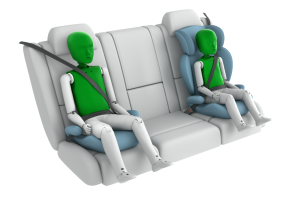
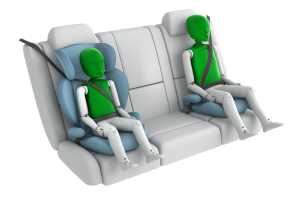
Passenger
outboard
center
Fitted to the vehicle as standard
Not fitted to the test vehicle but available as option
Not Available
-
i-Size CRS
-
ISOFIX CRS
-
Universal Belted CRS
Easy
Difficult
Safety critical
Not allowed
| Seat Position | ||||
|---|---|---|---|---|
| Front | 2nd row | |||
| Passenger | Left | center | Right | |
| Maxi Cosi 2way Pearl & 2wayFix (i-Size) | ||||
| Maxi Cosi 2way Pearl & 2wayFix (i-Size) | ||||
| BeSafe iZi Kid X2 i-Size (i-Size) | ||||
| Britax Römer TriFix2 i-Size (i-Size) | ||||
| BeSafe iZi Flex FIX i-Size (i-Size) | ||||
| BeSafe iZi Combi X4 ISOfix (ISOFIX) | ||||
| Cybex Solution Z i-Fix (ISOFIX) | ||||
| Maxi Cosi Cabriofix (Belt) | ||||
| Maxi Cosi Cabriofix & EasyFix (Belt) | ||||
| Britax Römer King II LS (Belt) | ||||
| Cybex Solution Z i-Fix (Belt) | ||||
Easy
Difficult
Safety critical
Not allowed
In both the frontal offset and the side barrier tests, the Mirai provided good protection to all critical body regions, for both the 6 and 10 year dummies, and the car scored maximum points in this part of the assessment. The front passenger airbag can be disabled to allow a rearward-facing child restraint to be used in that seating position. Clear information is provided to the driver regarding the status of the airbag and the system was rewarded. All of the restraint types for which the Mirai is designed could be properly installed and accommodated in the car.
- Good
- Adequate
- Marginal
- Weak
- Poor

Head Impact 21.5 Pts
Pelvis Impact 3.2 Pts
Leg Impact 6.0 Pts
| System Name | Pre-Collision System as part of Toyota Safety Sense | ||
| Type | Auto-Brake with Forward Collision Warning | ||
| Operational From | 10 km/h | ||
| PERFORMANCE | | |||
-
Cyclist from nearside, obstructed view
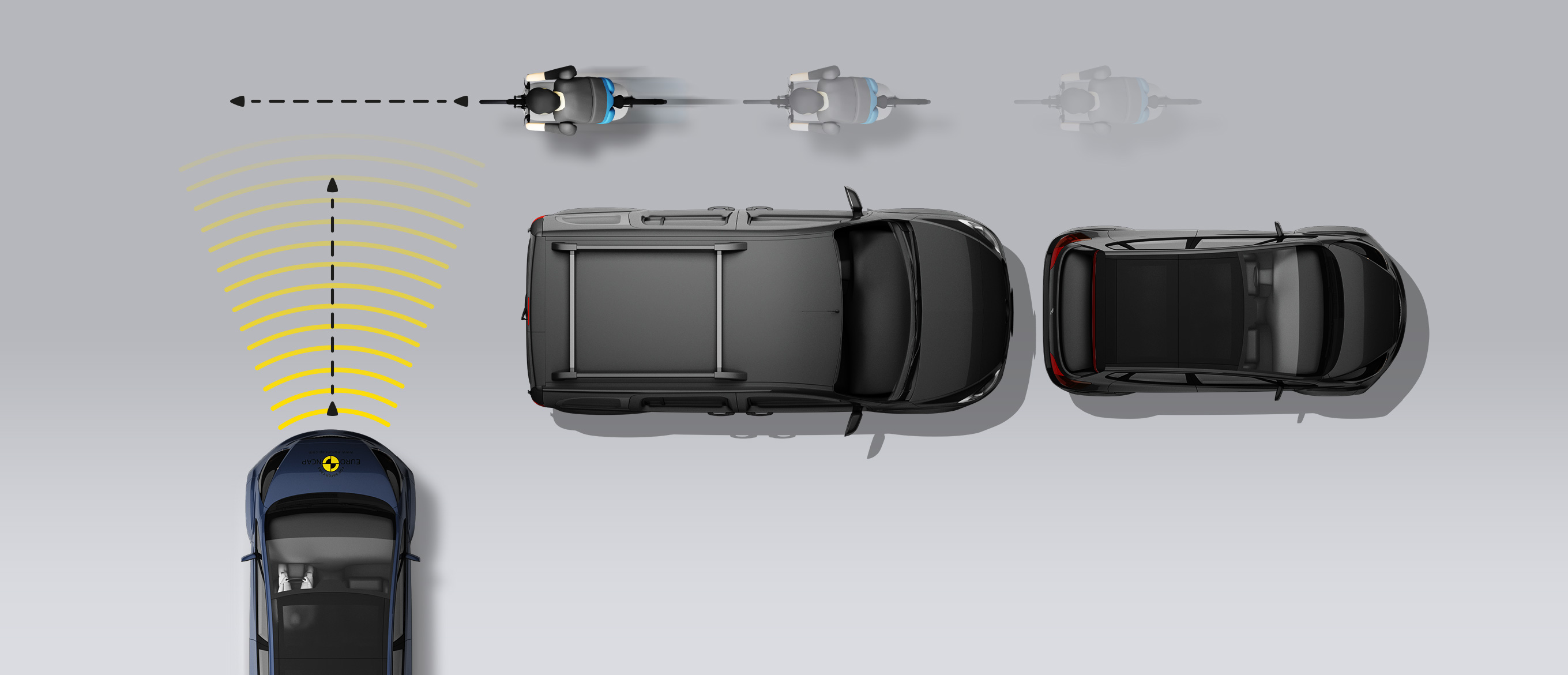
-
Approaching a crossing cyclist
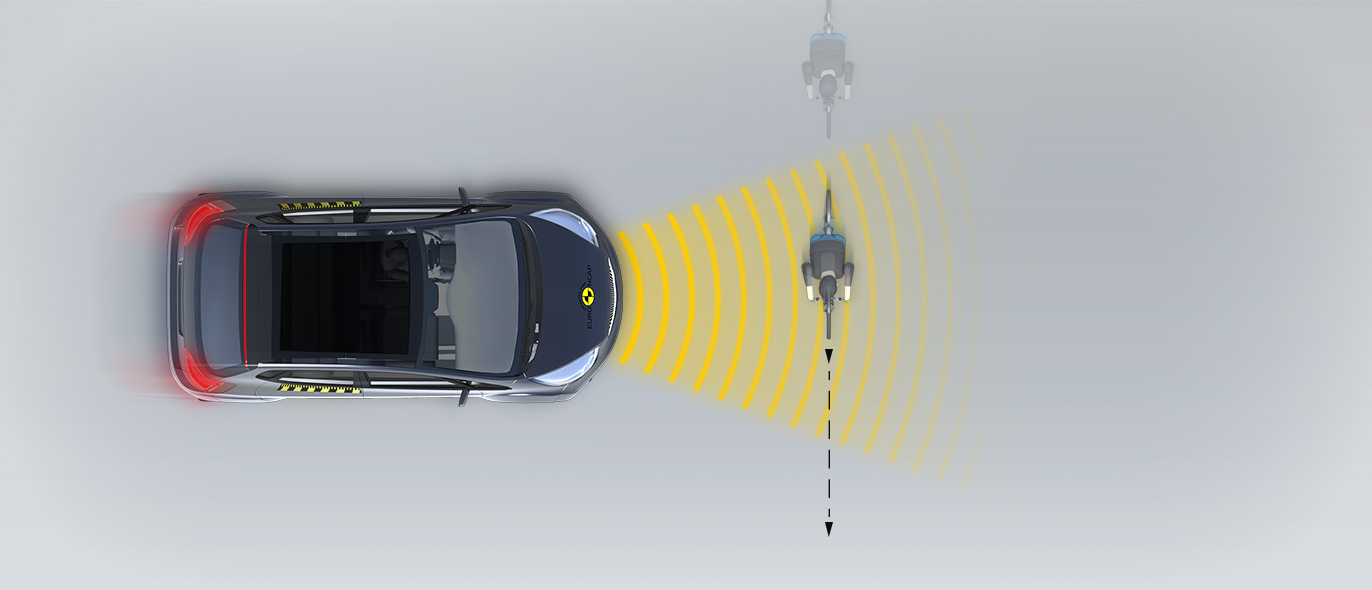
-
Cyclist along the roadside
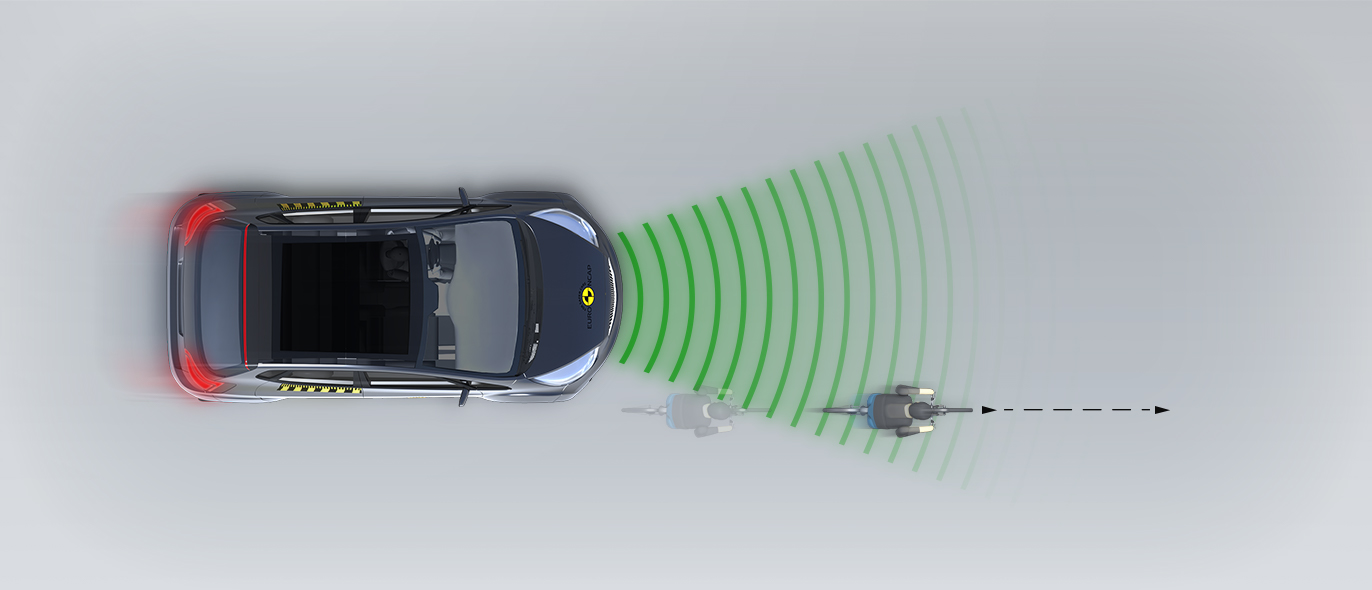
The Mirai has an 'active bonnet'. Sensors in the bumper detect when a pedestrian has been hit and actuators lift the bonnet to create more space between its surface and the hard components beneath. Toyota demonstrated that the system worked robustly for various pedestrian statures and over a wide range of speeds and, accordingly, the car was tested with the bonnet in the deployed, raised, condition. Protection of the head of a struck pedestrian was good, or at least adequate, over almost the entire area tested by Euro NCAP. Similarly, the bumper provided good protection to pedestrians' legs at all test points. However, pelvis protection was more mixed, some areas offering good protection and others poor. The autonomous emergency braking system of the Mirai can detect vulnerable road users such as pedestrians and cyclists, as well as other vehicles. The system performed adequately in these tests, with collisions avoided or mitigated in most cases.
- Good
- Adequate
- Marginal
- Weak
- Poor
| System Name | Dynamic Radar Cruise Control (DRCC) |
| Speed Limit Information Function | Camera based, subsigns supported |
| Speed Control Function | System advised (accurate to 5km/h) |
| Applies To | Front and rear seats | ||
| Warning | Driver Seat | Front Passenger(s) | Rear Passenger(s) |
| Visual | |||
| Audible | |||
| Occupant Detection | |||
|
|||
| System Name | Sway Warning System |
| Type | Steering inputs |
| Operational From | 50 km/h |
| System Name | Lane Tracking Assist (LTA) |
| Type | LKA and ELK |
| Operational From | 30 km/h |
| Performance | |
| Emergency Lane Keeping | |
| Lane Keep Assist | |
| Human Machine Interface | |
| System Name | Pre-Collision System as part of Toyota Safety Sense | |||
| Type | Autonomous emergency braking and forward collision warning | |||
| Operational From | 10 km/h | |||
| Sensor Used | camera and radar | |||
The Mirai has a seatbelt reminder system, including occupant detection, for the front and rear seats. 'Sway Warning System' monitors steering inputs and detects behaviour characteristic of fatigued driving, to encourage the driver to rest when necessary. The lane support system gently corrects the vehicle's path when it is drifting out of lane and also intervenes in some more critical situations to stop the car from leaving the road, for example. A camera-based speed assistance system determines the local speed limit and provides the information to the driver, allowing the speed limiter to be set appropriately. The AEB system performed adequately in tests of its reaction to other cars.
- Specifications
- Safety Equipment
- Videos
- Rating Validity
Specifications
Tested Model Toyota Mirai, LHD
Body Type - 4 door sedan
Year Of Publication 2021
Kerb Weight 1950kg
VIN From Which Rating Applies - all Mirais
Class Executive Car
Safety Equipment
Note: Other equipment may be available on the vehicle but was not considered in the test year.
Fitted to the vehicle as standard
Fitted to the vehicle as part of the safety pack
Not fitted to the test vehicle but available as option or as part of the safety pack
Not available
Not applicable
Videos
Rating Validity
Variants of Model Range
| Body Type | Engine | Grade | Drivetrain | Rating Applies | |
|---|---|---|---|---|---|
| LHD | RHD | ||||
| 4 door sedan | Hydrogen fuel cell electric | Mid grade, High* grade | 4 x 2 |  |
 |
* Tested variant

Find more information in the General Comments section of the assessment
 Share
Share
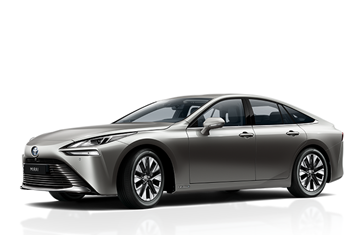
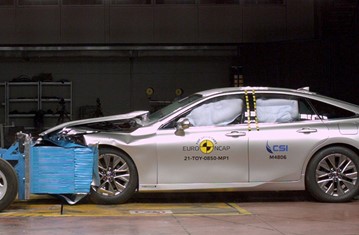

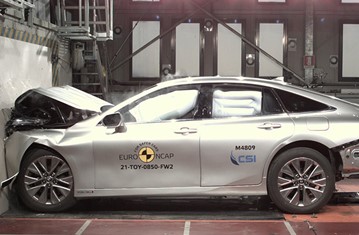
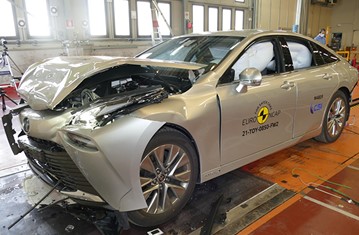
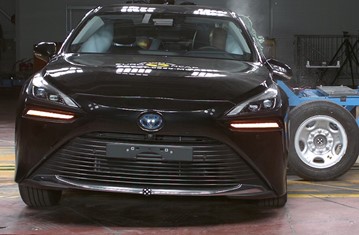
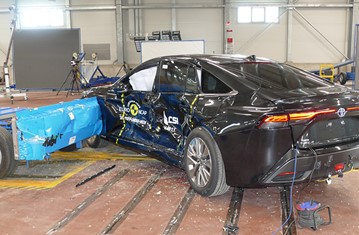
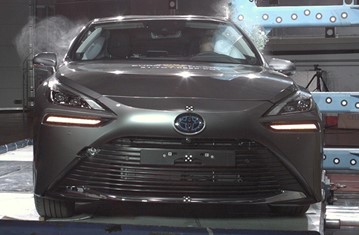
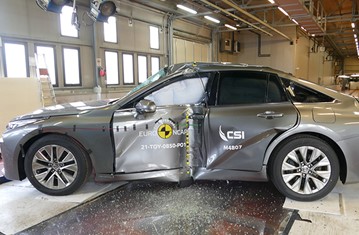


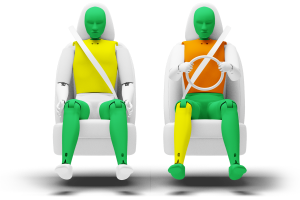
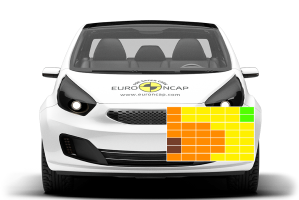
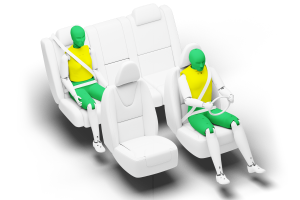


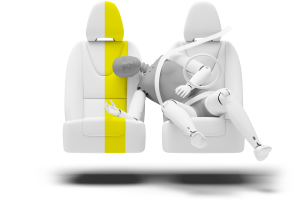
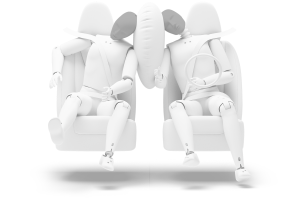
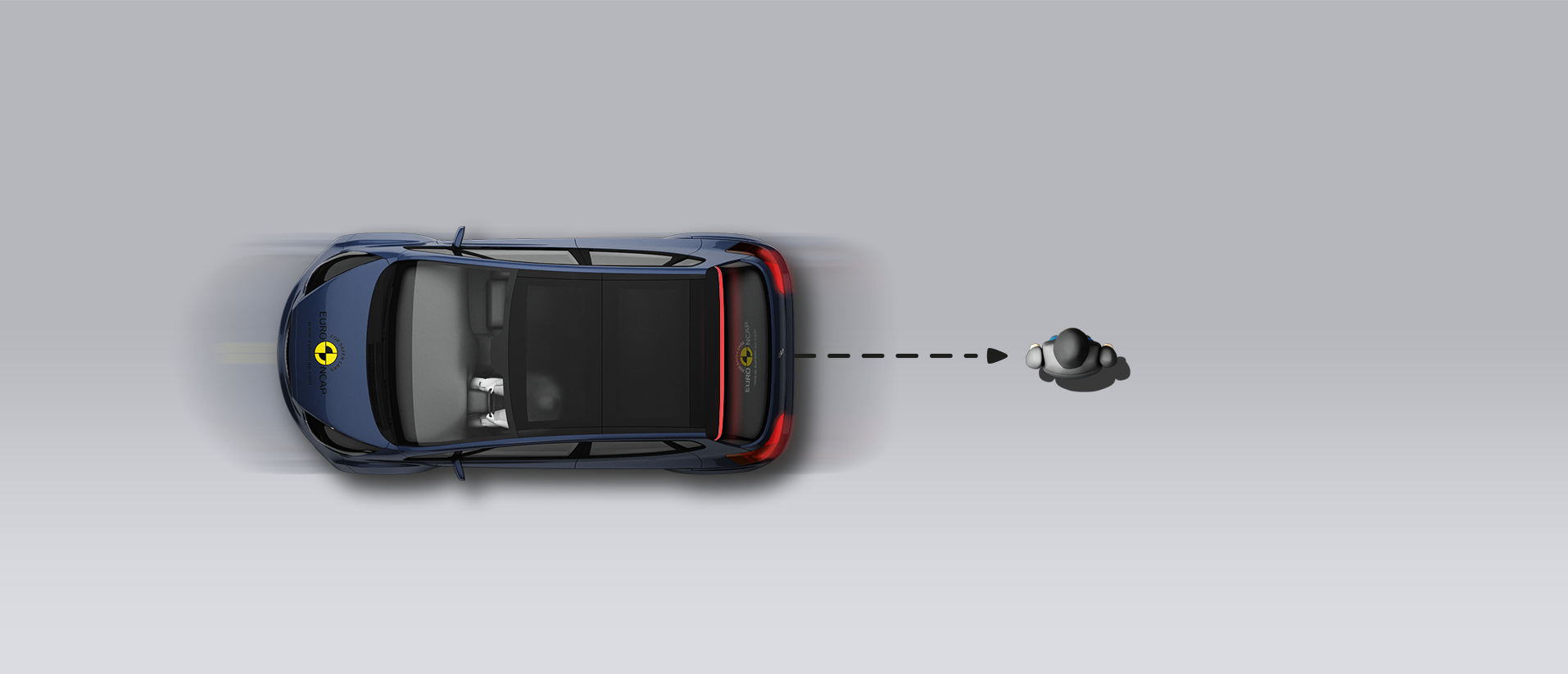
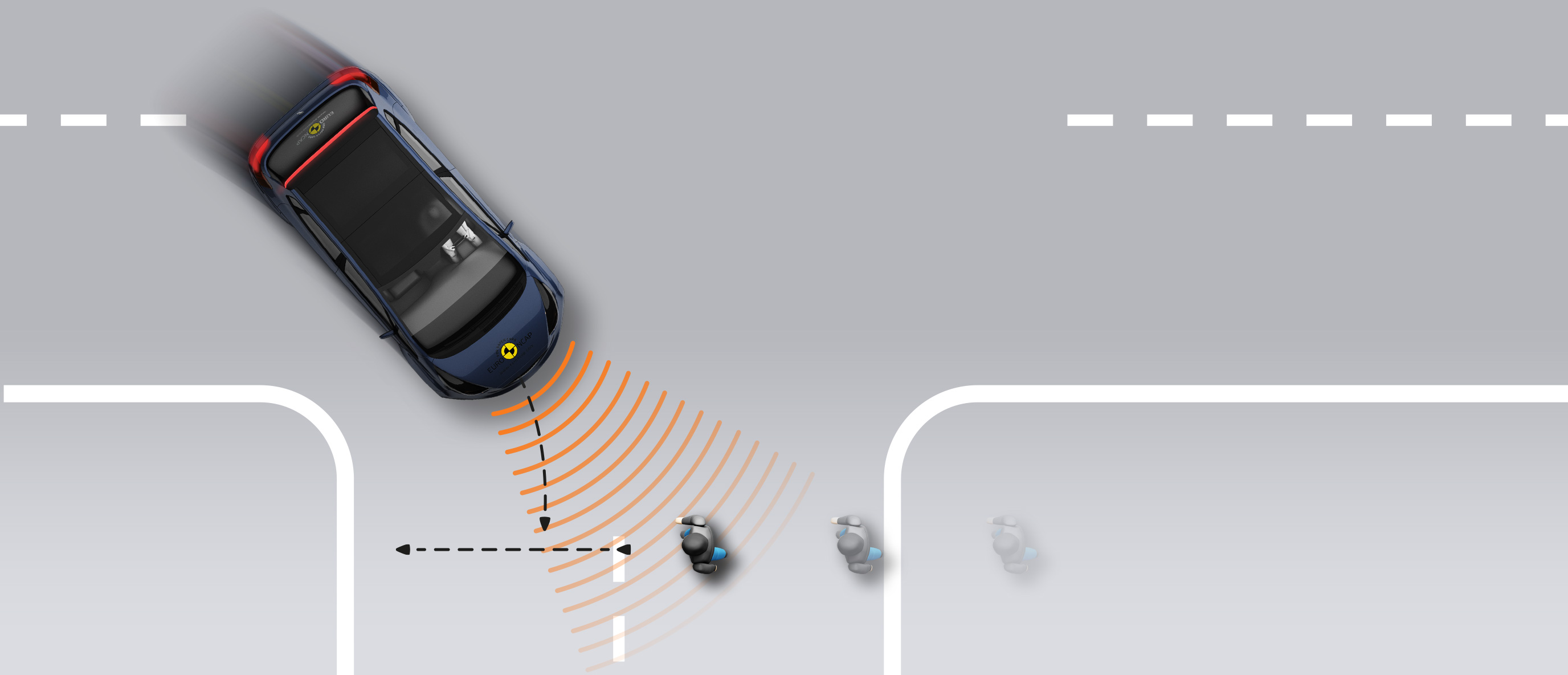
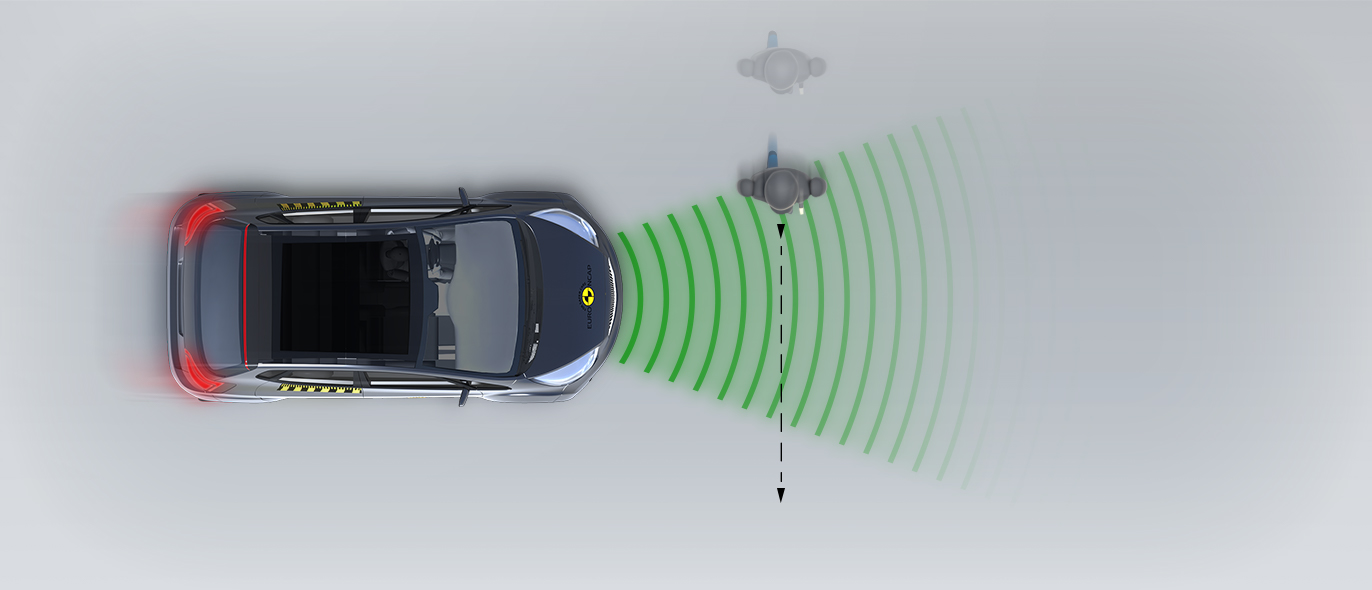
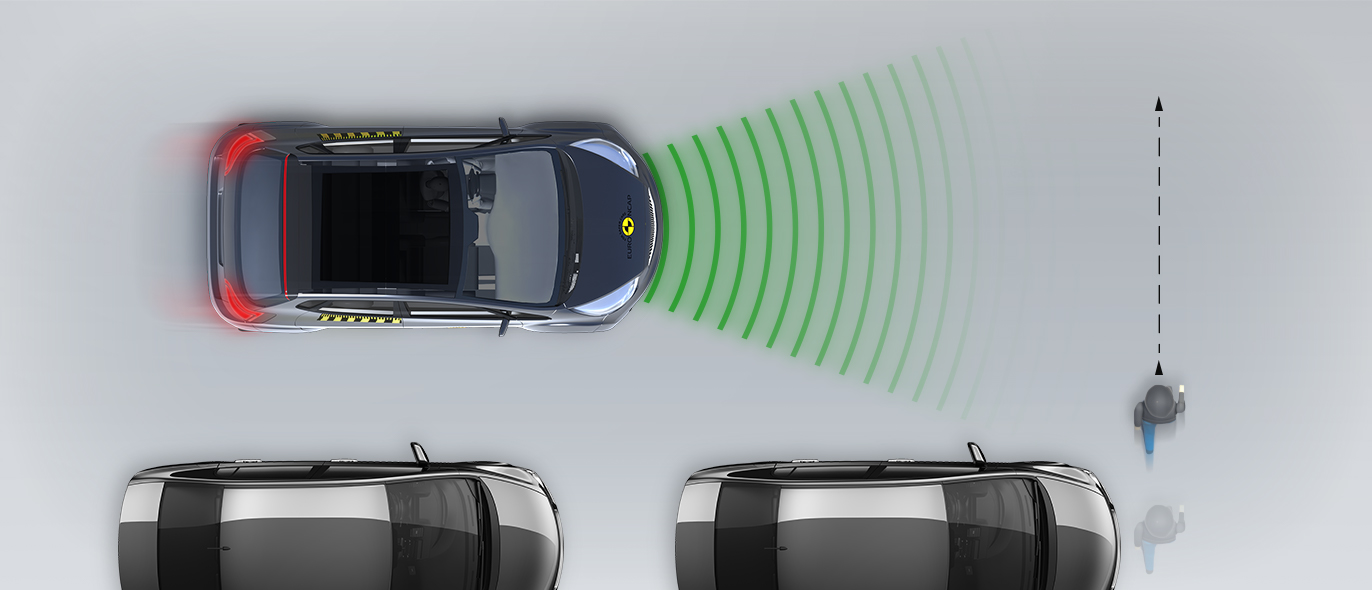
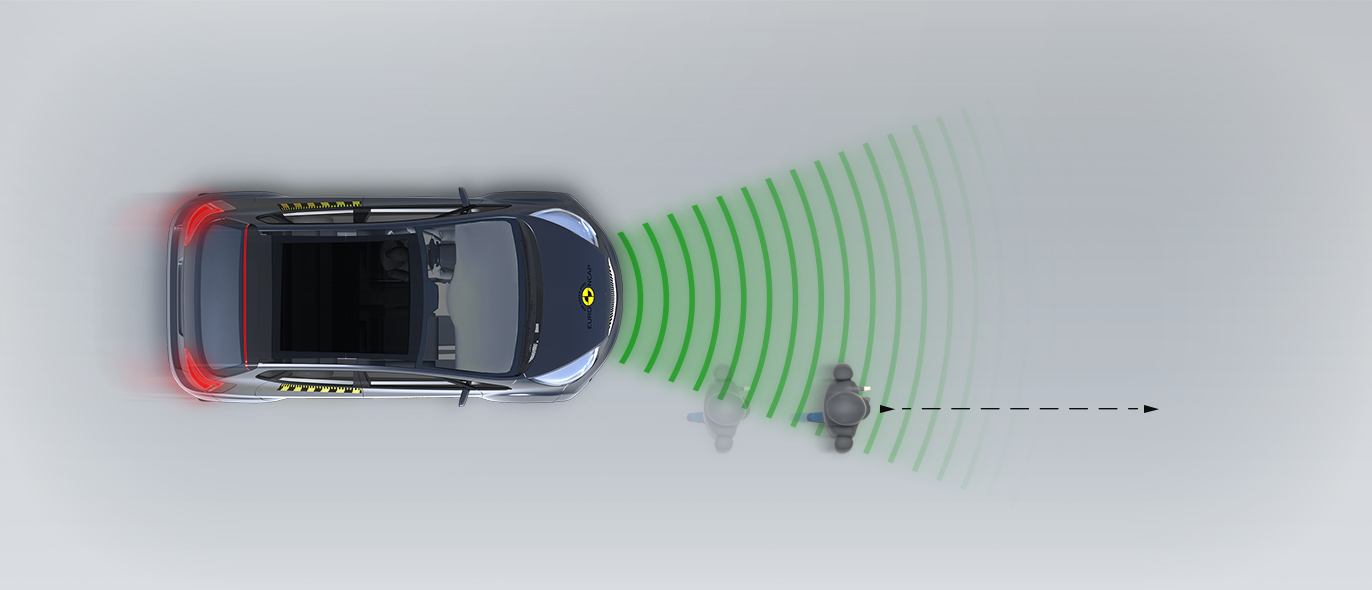


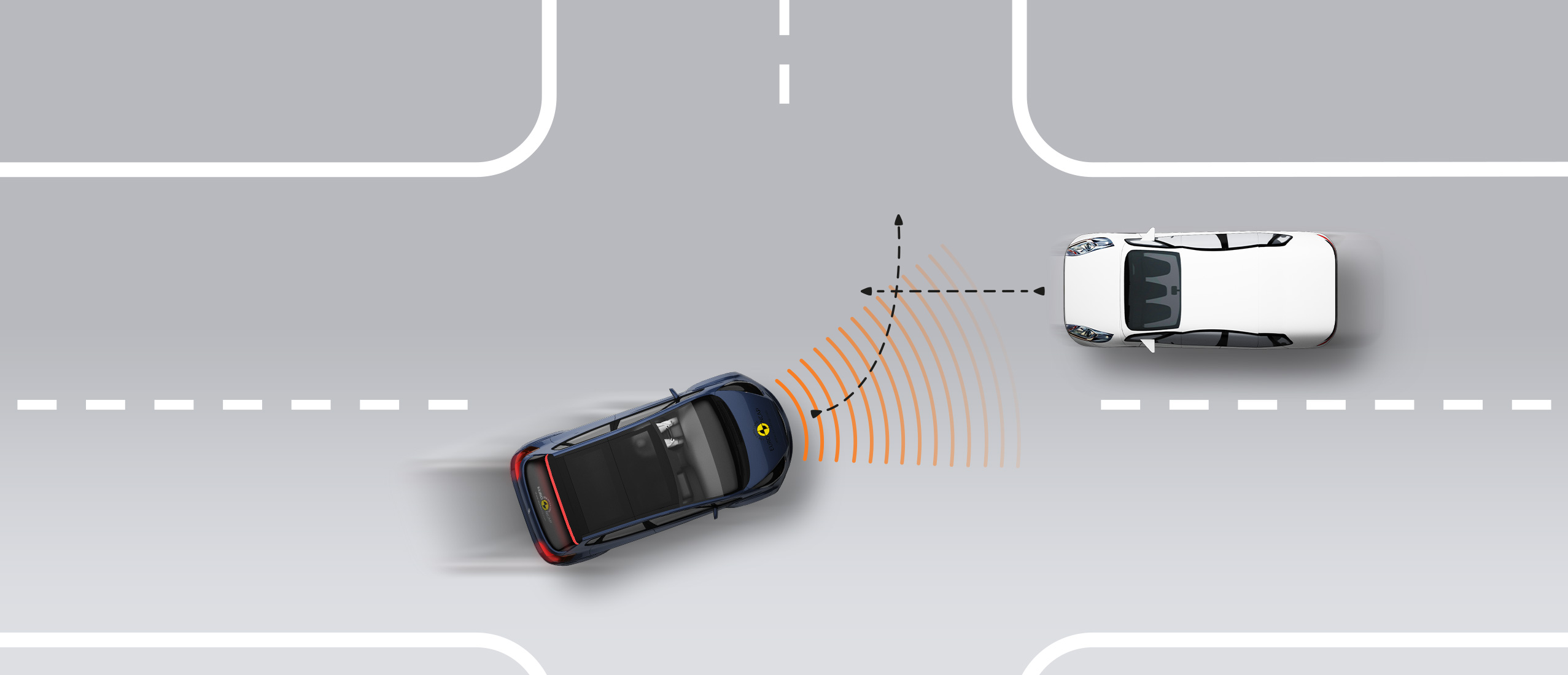
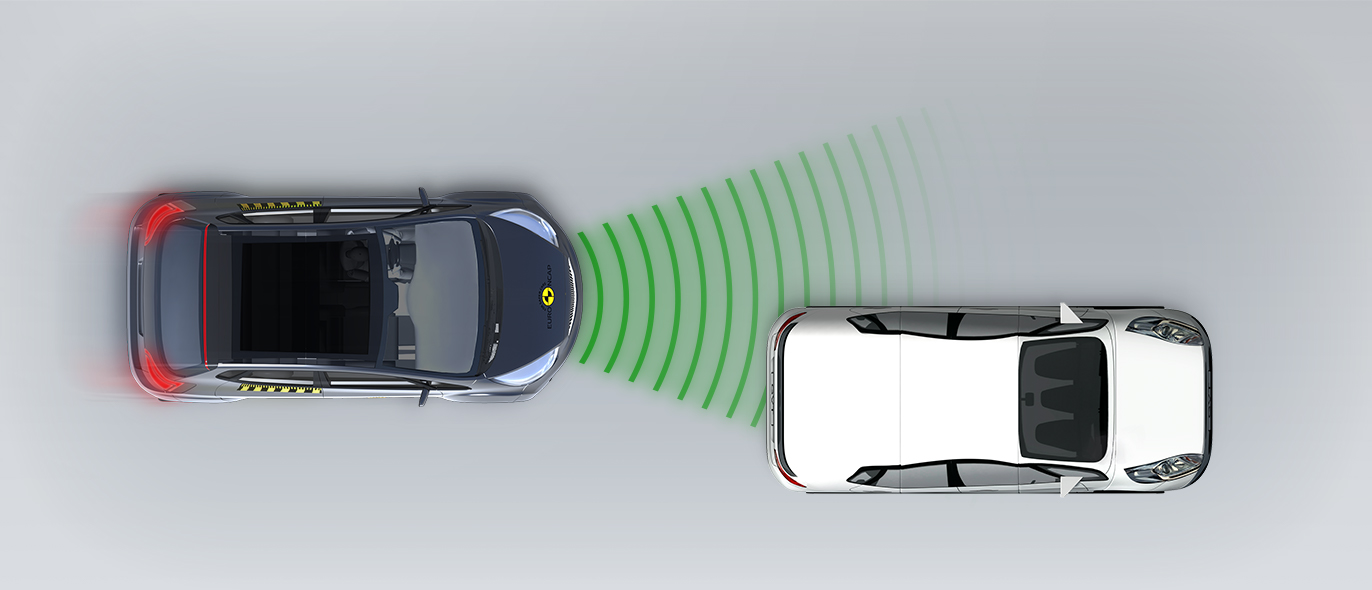
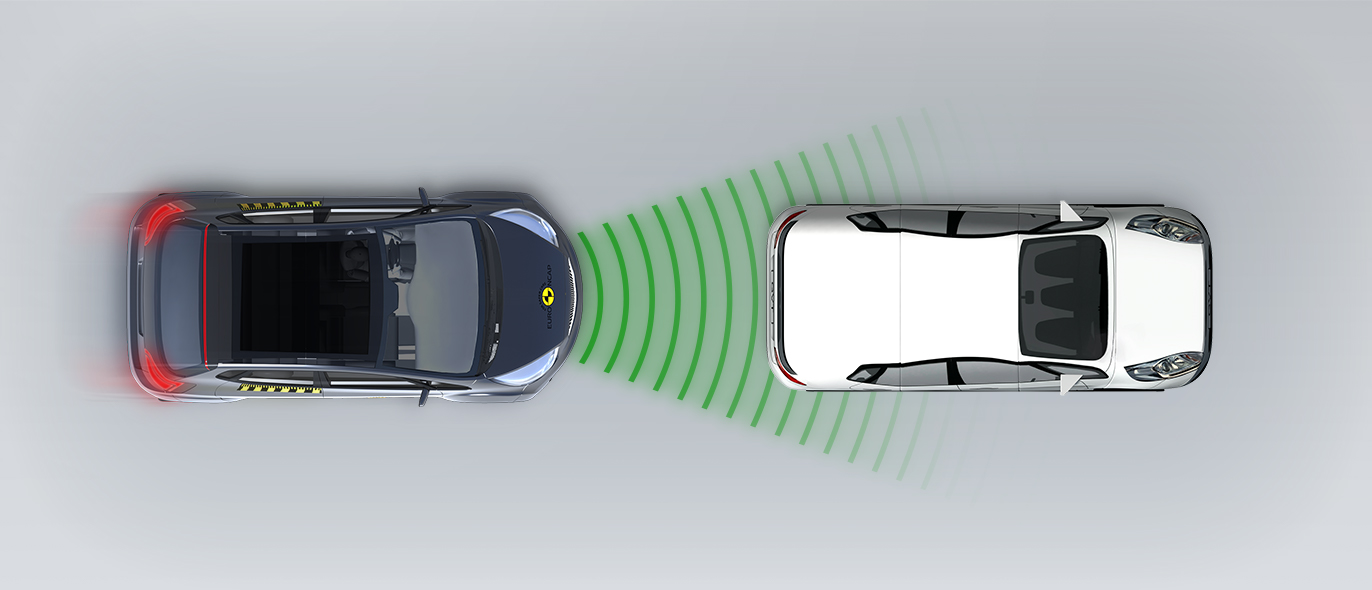
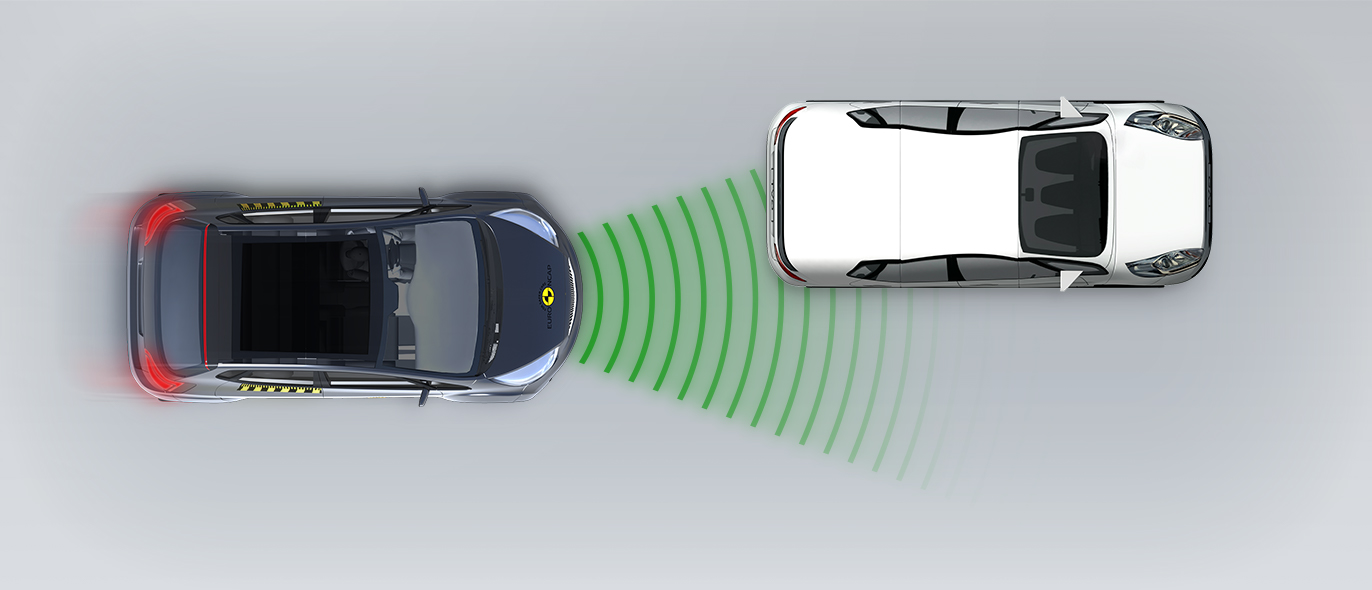
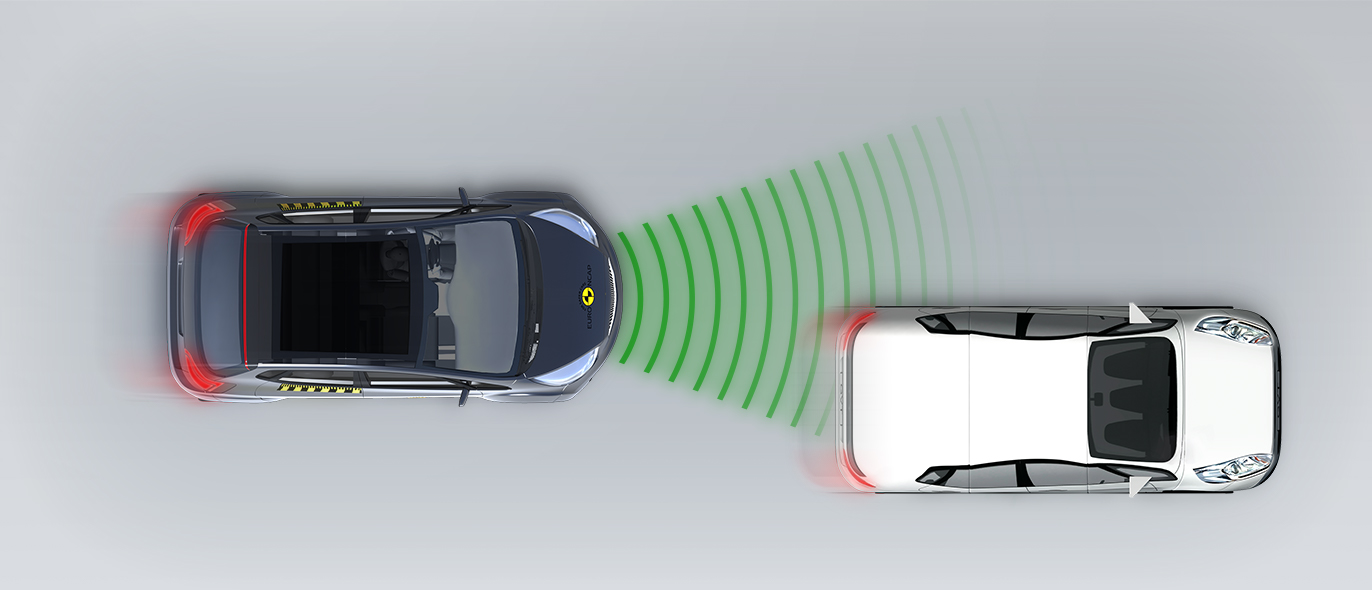
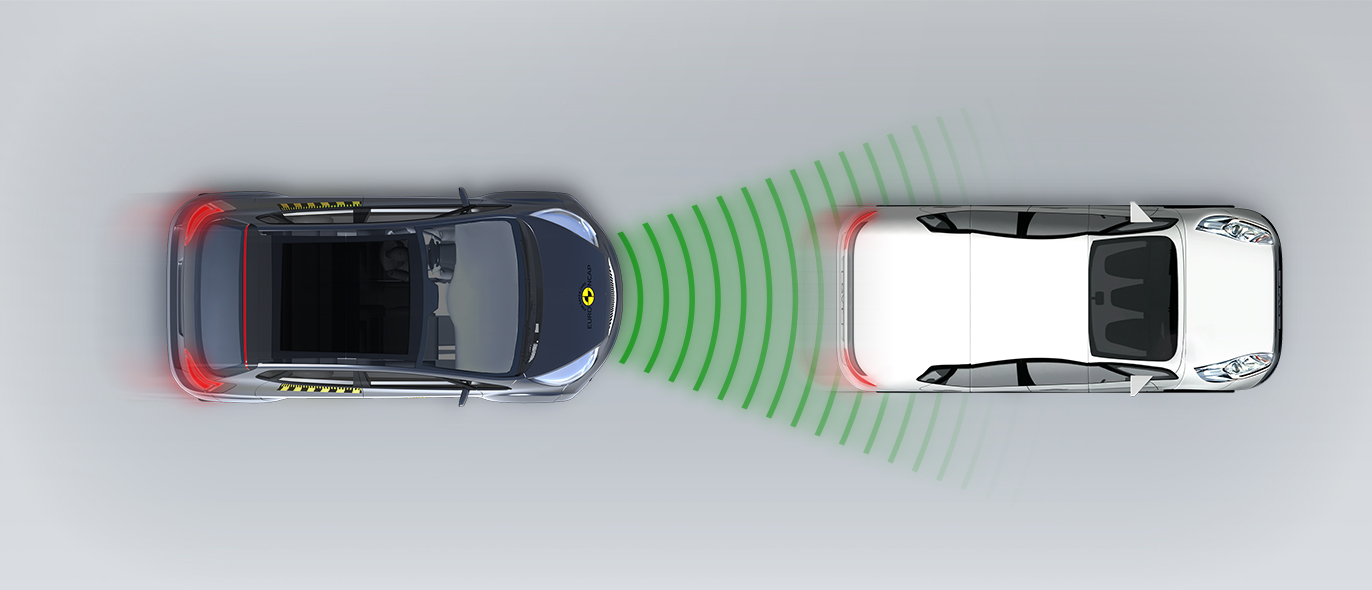
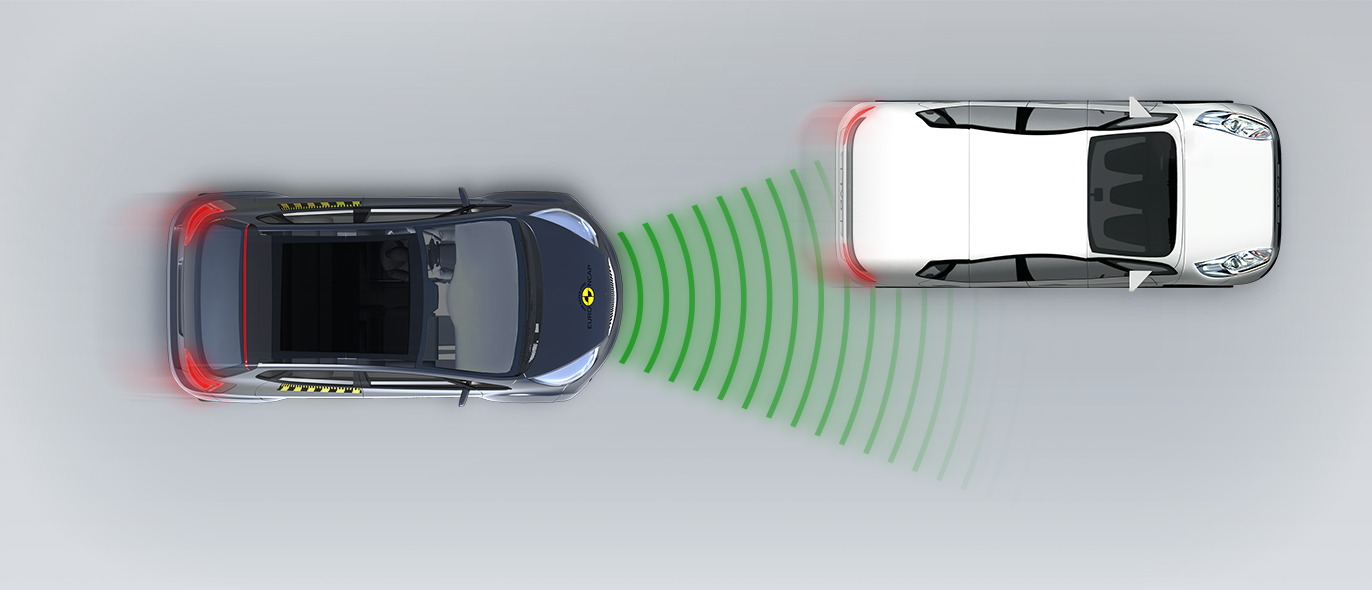


The passenger compartment of the Mirai remained stable in the frontal offset test. Dummy numbers showed good protection of the knees and femurs of both the driver and passenger. Toyota showed that a similar level of protection would be provided to occupants of different sizes and to those sitting in different positions. Protection of the driver's chest was rated as marginal, based on dummy readings of compression. Analysis of the deceleration of the impact trolley during the test, and analysis of the deformable barrier after the test, reveleaed that the Mirai would be a moderately benign impact partner in a frontal collision. In the full-width rigid barrier test, good or adequate protection was provided to all critical body areas, for both the driver and rear passenger. In both the side barrier test and the more severe side pole impact, protection of all critical body areas was good and the car scored maximum points in this part of the assessment. Limitation of excursion (the extent to which a body is thrown to the other side of the car in the event of an impact from the far side) was rated as adequate. The Mirai does not have a counter-measure, such as a centre airbag, to mitigate occupant to occupant injuries in such impacts. Tests on the front seats and head restraints demonstrated good protection against whiplash injuries in the event of a rear-end collision. A geometric analysis of the rear seats also indicated good whiplash protection. The Mirai automatically applies the brakes immediately after a collision, to prevent secondary impacts, and is equipped with an advanced eCall system which alerts the emergency services in the event of a serious accident.